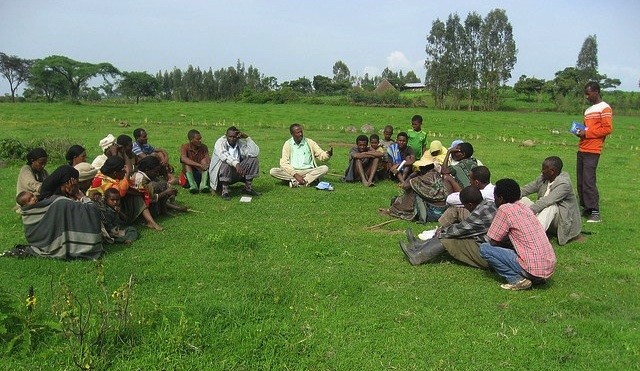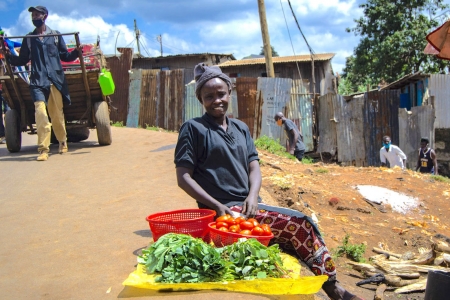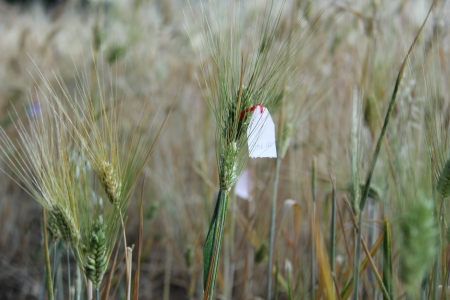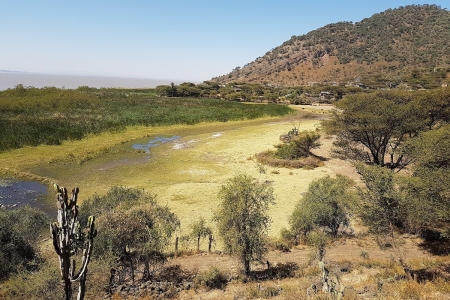This blog is part of the Agriculture and Ecosystems Blog’s month-long series on Restoring Landscapes.
Gender…..it’s a word that usually provokes a response, often either of eye-rolling or ardent interest. All too often, addressing gender, through gathering gender-disaggregating data or making sure to include women in all project activities, becomes an exercise in box ticking.
 Community members from Limbichoch village discuss enclosure of grazing land with ILRI researcher. Photo: ILRI
Community members from Limbichoch village discuss enclosure of grazing land with ILRI researcher. Photo: ILRIThe inclusion of gender has a long history in development and in development research, first as ‘women in development’ and then shifting to ‘gender and development’ in an effort to incorporate the relational aspects of gender. Analyzing gender identity and relations is still a long way from actually improving gender equity.
Context is essential for understanding gender but also for understanding the social and biophysical landscapes at the center of the CGIAR Research Program on Water, Land and Ecosystems (WLE). Landscapes are mosaics of highly varied natural resources as well as diverse populations of men, women, domesticated and wild animals. The multifaceted nature of ‘social landscapes’, consisting of men and women of different backgrounds, ages and interests, presents challenges to planners and implementers of programs designed to address land degradation and to improve gender equity.
Many land degradation programs have been unsuccessful because they have failed to adequately address these complexities and differences. Blanket approaches and quick wins have fallen short of goals and in some cases have had negative biophysical and social impacts.
Just as an understanding of resource flows and biophysical diversity is critical for targeting interventions, so is an understanding of how different people use landscapes in different ways and at different times. An example from Ethiopia helps illustrate this point.
Designing equitable interventions in the Nile Basin
In one landscape in the Nile Basin, a degraded communal grazing area was singled out as a site for restoration by the local government. Their aim was to regenerate the area by enclosing the land and restricting access to and use of the area by local users.
Communal grazing areas in Ethiopia are open spaces accessible to households living around them and regulated by traditional institutions. Such spaces are used for community gatherings, such as weddings and funerals, and play an important role in the maintenance of social networks.
These grazing areas are also used by different community members for a variety of practical purposes. In this particular case, farmers use the communal land to contain their livestock during the growing season. Keeping livestock away from cultivated fields, where they may destroy crops, decreases the chance of disputes. Both rich and poor farmers thus rely on the space. Poor women, often from households with no livestock, also use the space to collect dung to make into cakes for their own use and sale as fuel. And finally, young landless men use the space as they try to carve out some land from it for agricultural production.
So, in one small segment of a wider landscape you have different groups using the space and its resources. Enclosing this space may indeed regenerate it, but what will happen to the current users?
In this case, enclosing grazing areas denies vulnerable members of the community access to important resources. These are the sorts of trade-offs always at play in implementing any kind of intervention. If the context is not well understood, there can be unintended and unpredictable consequences on people’s lives and the natural environment.
Knowing that landscapes are used by different people for different purposes is one step in deciding how to design more effective and equitable interventions. Perhaps, in the above instance, alternative income-generating activities could be designed to make up for women’s loss of income from dung collection that would result from an enclosure. Alternative fuel sources could also be explored. Equitable benefit sharing mechanisms are perhaps required to ensure that the poor or those with no livestock do not lose out.
Are we aiming to achieve gender equity?
It must be emphasized however that paying attention to gender and other social differences when designing landscape-scale or even farm-scale interventions, is not the same as achieving gender equity. Often, in development discourse, there is a tendency to equate interventions that address women’s practical and economic needs (such as access to water, or improved market access, etc.) with gender equity.
Achieving genuine gender equity is essentially a political act as it calls for a re-distribution of power and so may face resistance from entrenched social and political interests. If WLE wants to both address women and men’s practical needs and also work towards gender equity, partnerships with activist organizations and others who work in this politically charged milieu are necessary.
Research institutions can work effectively in these partnerships by providing the evidence that these organizations need to work for social and political change. While evidence is critical both for policy and intervention design, when evidence comes up against established interests, it can often be ignored and brushed aside. In this case, it becomes even more critical to understand those interests in order to design effective incentives for change.












Comments
I agree 100% with the authors' thesis, but my question would be, are CGIAR centers willing to work seriously on controversial and contested power issues? Working locally will not be adequate -- we would have to engage at multiple levels and will definitely meet resistance. This would go against the current approach of CGIAR centers including NBDC to either work "with" but not challenge vested interests, or stay away from highly controversial positions.